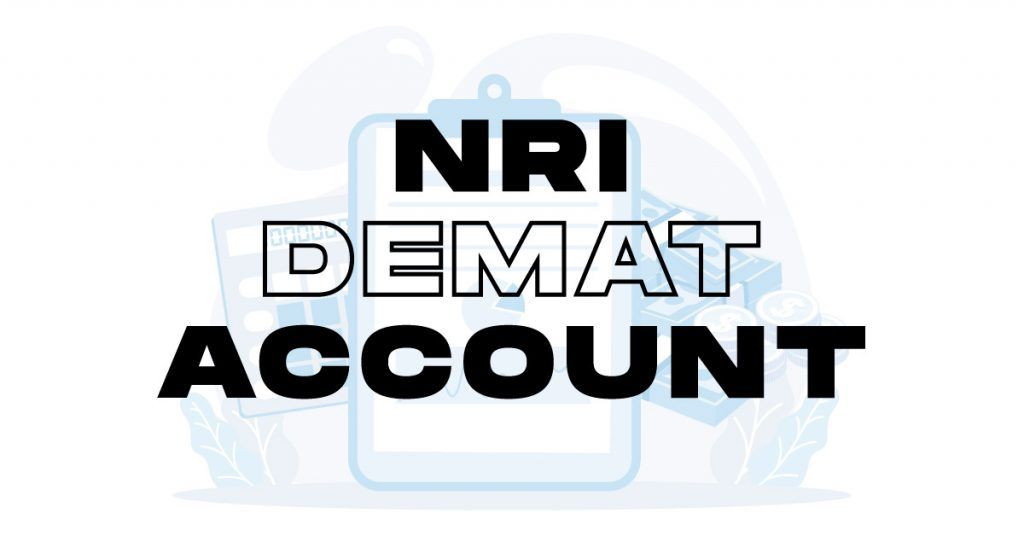What are IPO Requirements in India?
Written by Upstox Desk
Published on October 24, 2025 | 9 min read

An Initial Public Offering is the process through which companies sell their first shares to the public. IPOs are often announced by smaller companies seeking capital to enlarge, but they can also be done by much larger privately held companies as well. Large privately held companies generally resort to an IPO to raise capital by selling shares of ownership and receiving the fund it needs.
To go public, a company must first file an IPO prospectus with the Securities and Exchange Board of India (SEBI), which outlines the details of the offering. The SEBI reviews the prospectus and decides whether or not the offering can proceed.
What are the requirements for an IPO in India?
Certain requirements must be fulfilled:
- First, the company must have existed for at least three years.
- Second, it must have made profits in at least two years.
- Third, it must have a minimum net worth of Rs. 3 crores.
- Fourth, it must have a minimum float of 20%. This means that at least 20% of its shares must be available for public trading.
- Specific financial and legal requirements must be fulfilled. A SEBI-registered Merchant Banker must audit the financial statements.
In this article, we shall discuss the topic in detail.
What are the conditions for a public offering?
Certain requirements must be fulfilled to go public. These include having a minimum of seven shareholders, minimum share capital of Rs 500,000, and at least 3 years of profit. Also, it must be registered with the Securities and Exchange Board of India.
Once these requirements are fulfilled, they can file for an initial public offering. This process can be done through an investment bank or stockbroker.
The conditions for the public offering may vary depending on the country. For example, in India, a company must have a minimum paid-up capital of Rs. 50 lakhs and a net worth of at least Rs. 10 crores.
When going public, there are some things to be followed in order to ensure success. The company's financial statements should be accurate and have a solid management team. Also, it is essential to ensure that it has the sufficient cash flow to repay debt and meet its operating expenses.
What is the role played by SEBI in an IPO in India?
IPOs in India are governed by the Securities and Exchange Board of India, which is the country's capital market regulator. SEBI's primary role is to ensure that the process is fair and transparent for all parties involved. To that end, SEBI has a set of guidelines that companies must follow. For example, SEBI has established a minimum amount companies must raise to justify the process. In addition, it also requires using a specific set of auditors and a particular type of prospectus when issuing an Initial Public Offering.
What are the eligibility criteria for IPO applications mandated by SEBI?
In order to be eligible to list and trade on a stock exchange in India, a company must meet certain criteria set forth by the Securities and Exchange Board of India. Some of these requirements include:
-First, the company must have a minimum net worth of Rs. 3 crores.
-Second, it must have been in business for at least 3 years.
-Third, it must have made profits in at least 2 out of the 3 most recent financial years.
-Fourth, at least 25% of the company must be owned by the public (i.e. not held by promoters or related parties).
-Fifth, the audited financial statements for the past 3 years must be clean, with no qualifications or exceptions.
-Sixth, it must have a minimum paid up capital of Rs. 1 crore.
-Seventh, the net profit in the last 3 years must be positive.
-Eighth, The company should not have defaulted on any loan and/or overdraft from any bank or financial institution.
What are the necessary conditions apart from IPO applications mandated by NSE and SEBI?
Apart from the application for an IPO that the NSE and SEBI mandate, a few other necessary conditions must be met. Following are the conditions listed below:
- The company must have been in business for at least 3 years, and it must have made profits in at least 2 of those years. It must also have a minimum net worth of Rs. 3 crores.
- Additionally, the company must not have any outstanding litigation against it, and at least 25% of the shares must be offered to the public.
- It can apply for listing on the stock exchange through a merchant banker. A merchant banker is a financial intermediary who arranges and manages equity and debt capital markets transactions. Firms usually hire merchant bankers to help them raise funds in the capital market. A merchant banker will help a firm price and execute the IPO, and after listing the shares on the stock exchange, it will be responsible for managing shareholder relations.
What is the process of applying for an IPO?
The process takes about six to eight months and involves the following steps:
- Appointment of merchant bankers: The Company appoints one or more merchant bankers to act as its lead manager(s).
- Filing of Draft Red Herring Prospectus (DRHP) with SEBI: The DRHP is filed with the Securities and Exchange Board of India.
- Obtaining SEBI approval: Once the DRHP is filed, SEBI will review it and provide comments/suggestions within 60 days. The company then needs to address any concerns raised by SEBI and file a revised DRHP, if required.
- Finalising the offer size and price band: Once SEBI has given its comments, the company can finalise the offer size and price band.
- The launch of the IPO: After the finalisation of the issue details, the company announces to the public its intention to launch an IPO. The lead merchant banker(s) then contacts potential investors and provides them with a copy of the draft Red Herring Prospectus (DRHP).
- The pricing of the IPO: The lead merchant banker(s) decide on the price at which they will launch the IPO. However, it must be within the specified range. They decide on this basis of how well the issue is expected to perform and in view of prevailing market conditions.
- The book opening and allotment: The IPO is open for subscription by eligible investors for a specified period of time. The lead merchant banker(s) will arrange for the opening of the issue on behalf of the company as per SEBI guidelines.
What are the grounds for rejection of Draft Red Herring Prospectus (DRPH) directed by SEBI?
Draft Red Herring Prospectus (DRPH) is a document filed with SEBI by a company seeking to go public. The DRPH sets out the company's business plan and financial projections and is used to gauge investor interest in the IPO. SEBI requires all companies seeking to go public in India to file a DRPH.
The DRPH must be filed at least 21 days before the IPO's launch and made available to all potential investors. It is essential for companies to provide accurate and up-to-date information in their DRPHs, as any material misstatements could lead to SEBI taking action against the company.
SEBI has outlined certain conditions that must be met for a company's Draft Red Herring Prospectus (DRHP) to be accepted. If any of these conditions are not met, the DRHP may be rejected outright.
The grounds for rejection are as follows:
- Substantial changes have been made in the financial statements or any other information contained in the DRHP, and no change report has been filed.
- Changes have been made to the structure of the board of directors without obtaining prior approval from SEBI.
- Changes have been made to the management of the company without obtaining prior approval from SEBI.
- Any non-compliance with any applicable laws, rules or regulations of India or other countries.
- Any changes have been made to the company's shareholding pattern without informing SEBI.
- Any change in the name of the company.
- Any change in the registered office of the company.
- Any change in the objects and purposes for which a public issue is proposed to be made.
- Any other material change.
What would happen if a company fails to comply with the above Regulations?
There are a few potential consequences. The company may be subject to civil or criminal penalties, including fines and jail time for the company's officers. Also, it may be barred from selling securities in the future. In addition, the failure to comply with IPO requirements could damage its reputation and make it difficult to raise capital in the future.
Recent IPOs have faced a number of failures, primarily due to overvaluation and poor planning.
Conclusion
IPOs are often used to raise business capital, but they can also allow existing shareholders to cash out their investments.
The requirements for an IPO in India vary depending on the size and type of company going public. However, all companies must file an offer document with the Securities and Exchange Board of India, which includes financial statements and other information about the business.
IPOs can be complex and lengthy, so working with experienced professionals is important to ensure everything is done correctly. Going public can be a great way to raise capital and grow your business, but it's not right for every company. Carefully consider all of your options before making a decision.
Frequently Asked Questions (FAQs):
Q. When is the best time to file an IPO in India?
The best time is when the company is ready and has the required paperwork in order. Also, it should have a good financial history and be able to show potential investors that it is a good investment. IPO requirements in India can be found on the website of the Securities and Exchange Board of India.
Q. What is the timeline for an IPO in India?
The IPO process in India generally takes 4-6 months and involves filing a draft prospectus approval of SEBI. After that, the company will issue a public notice inviting applications from interested investors. It will then allot shares to successful applicants based on the demand received. The first step is to appoint a merchant banker, followed by filing a DRHP with SEBI and after the approval, you can begin marketing your IPO to potential investors.
Q. How much does it cost to go public in India?
It may vary depending on the size of the IPO and other factors, but typically ranges from Rs. 2-5 crore (approx. US$300,000-750,000).
About Author
Upstox Desk
Upstox Desk
Team of expert writers dedicated to providing insightful and comprehensive coverage on stock markets, economic trends, commodities, business developments, and personal finance. With a passion for delivering valuable information, the team strives to keep readers informed about the latest trends and developments in the financial world.
Read more from UpstoxUpstox is a leading Indian financial services company that offers online trading and investment services in stocks, commodities, currencies, mutual funds, and more. Founded in 2009 and headquartered in Mumbai, Upstox is backed by prominent investors including Ratan Tata, Tiger Global, and Kalaari Capital. It operates under RKSV Securities and is registered with SEBI, NSE, BSE, and other regulatory bodies, ensuring secure and compliant trading experiences.

























